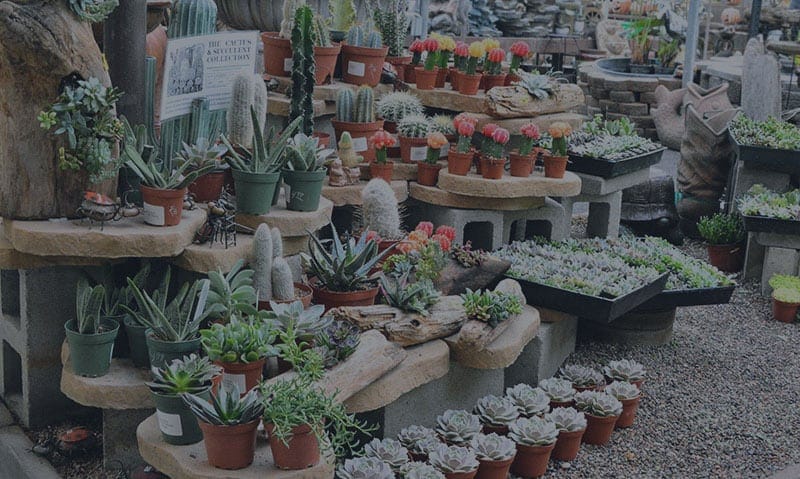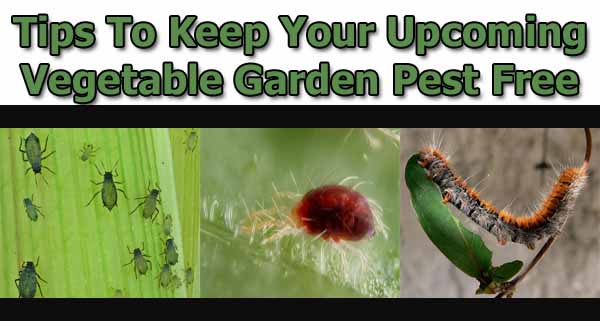Newsletter Articles
Tips To Keep Your Upcoming Vegetable Garden Pest Free
Written by Kelsey W.
The mild weather of Southern California gives millions of plants and animals the chance to thrive throughout the year, but it also means plants are continuously vulnerable to pests that can cause life-threatening damage when they are allowed to grow unchecked.
It’s not uncommon for Southern California residents to plant vegetables throughout the year, but the Spring is when vegetable planting really ramps up, and the warmer temperatures start to create a much more welcoming environment for garden pests and harmful insects.
Employing specific planting strategies and making smart decisions about when and how to plant your upcoming vegetable garden can help you avoid the inevitable aphids, spider mites, caterpillars, and spider mites that discover your delicious plants.
Here are some planting strategies for keeping your vegetable garden pest-free this year, as well as some options for dealing with pests when you see them.
Keeping Plants Healthy During the Growing Season
The best defense against pests in Southern California is a healthy plant.
You might not realize it, but the tomato plant at the end of the row that’s doing poorly is a magnet for pests. Why would insects want to converge on a dying or weak plant? They’d do so for the same reason a lion would choose the weak member of a pack of antelopes to attack.
A weak and dying plant won’t have the strong and natural defenses of a healthy plant and as a consequence, bugs that regularly attack that type of plant will feast upon it before any other. Keeping your plants healthy is one of the best options you have for avoiding an unfortunate infestation.
And the concept of “healthy” extends to the soil, too. If you have soil that remains too wet and waterlogged, you might find that your plants aren’t faring too well in the soil and that you’re also creating a welcoming environment for invasions of root rot and fungus.
Remember that keeping your garden pest-free doesn’t just mean waving away the tomato worms and aphids. You’re also trying to keep invaders like fungus away since those problems can wipe out an entire row of plants in record time if you’re not careful.
Don’t Create a Crowded Vegetable Garden
Plants need lots of space to grow and breathe.
Your vegetable garden needs good airflow as much as it needs light and water, and arranging your plants so that they have some space between them helps maximize the flow of sunlight and water to the plants, as well as making it a little tougher for some insects to invade the plants.
Some insects are quite small, and a breeze can make it impossible for them to really grab onto a plant and damage it. Just like a blowing fan can help you avoid mosquitos in your bedroom at night, vegetable plants that have room to bend and sway in the wind aren’t as vulnerable to pests landing on them.
Furthermore, if you space your plants out as much as you can, it’ll make it tougher for the pests on one plant to make the jump to another. If you leave an infestation alone for long enough, it’s inevitable that they’ll spread everywhere, but spacing your plants out will give you some extra time before that occurs.
Your Eyeballs Work Wonders for Keeping Plants Pest-Free
Inspect your vegetables daily for signs of insects, fungus, and poor health.
When pests overwhelm your garden, herbicides can certainly help you get the upper hand on treating your plants for an infestation, but examining your plants every day can help you stop those problems before they even start.
It does take some time for an infestation to reach the point where the bugs are multiplying and creating an overwhelming infestation, which means you may have the opportunity to stop the infestation in its tracks simply by physically removing the bugs you see from the plants.
A prime example of a type of bug that you can remove yourself is the aphid. Just take a paper towel (you can use a regular towel, too) and put some dishwashing liquid on it and then spray it with a water bottle. You can wipe the leaves down of the plant to remove the aphids.
If you act quickly enough, the aphids won’t have a chance to multiple and overwhelm the area. However, you need to hit this infestation early or risk having to remove the plant entirely from your vegetable garden so as to keep the rest of your area pest-free.
What Types of Insects Might You See in Your Southern California Vegetable Garden?
Any plant is vulnerable to pests unless it’s grown in a hermetically sealed container, but there’s very little chance you’ll grow your vegetables in a giant sealed box. Therefore, you’ll find it helpful to know what insects to look out for in your vegetable garden.
Aphids are a pretty common issue, especially when your garden contains plants like lettuce, beets, and potatoes. Aphids also enjoy munching on squash, pumpkins, and cucumbers, all of which are popular additions to Southern California vegetable gardens.
Spider mites are another common invader, and you may see these insects when you grow beans, peppers, or tomatoes in your garden. They also attack squash and melons and may also find interest in your peas and sweet potatoes.
If you see any of the leaves of your plants starting to curl, you might have an insect like a moth, fly, or beetle trying to place their larvae in your plant. Once the larvae emerge from their slumber, they will go right to work eating the leaves on which they were placed.
A final bug that’s unfortunately common in Southern California is the caterpillar, which you’ll usually see once they emerge from their eggs. These little insects aren’t the giant tomato hornworms that look like they jumped out of a childhood nightmare. However, you can get rid of them the same way: just pick them off your plants.
What to Do When You Find an Infestation?
Sometimes, all the planning in the world can’t prevent the occasional pest from invading your garden. If you catch the infestation early enough, you can take evasive action and immediately remove the plant entirely.
While it’s tough to remove a plant you’ve been spending time growing, sometimes it’s the best move to prevent the spread of an infestation. If there are too many bugs on the plant, you might just want to remove it entirely from your property.
However, if you’re not keen on discarding the plant and you have enough room to deal with it elsewhere at your home, you can try to isolate it and treat it. If you’re facing an infestation of caterpillars, which are relatively easy to see, you might be able to eventually clear the plant of all bugs.
One effective way to combat a variety of garden pests is neem oil, but it’s important to use it sparingly and at specific times so as to avoid harming any local bee colonies. While the substance is considered non-toxic to birds, bees, and mammals, high concentrations can harm essential pollinators.
To use neem oil responsibly, try to avoid using it during periods of significant blooming around your yard. You can also use it overnight in your garden when bees aren’t active. Bees need the warmth of the sun, and they’re much less active overnight, even when temperatures are mild after sunset.
Another option is to use vinegar, which can pull double-duty when it comes to pests. Not only can it help you fight a current infestation, but it can also help you prevent another infestation. Some of the pests you can deal with when you use vinegar include moths, ants, and even fruit flies.
Green Thumb Nursery Will Help You Keep Your Vegetable Garden Growing
The best time to think about garden pests is before you even start planting. Visit Green Thumb Nursery for tips and ideas on how to get your vegetables started this year so you’ll be prepared to deal with any insects that decide to take up residence in your garden. You can rely on everyone’s friendly advice and knowledge at Green Thumb Nursery.
Do you like what you see? Sign up for our weekly newsletter to get content like this every week!
CLICK HERE TO SIGN UP!


